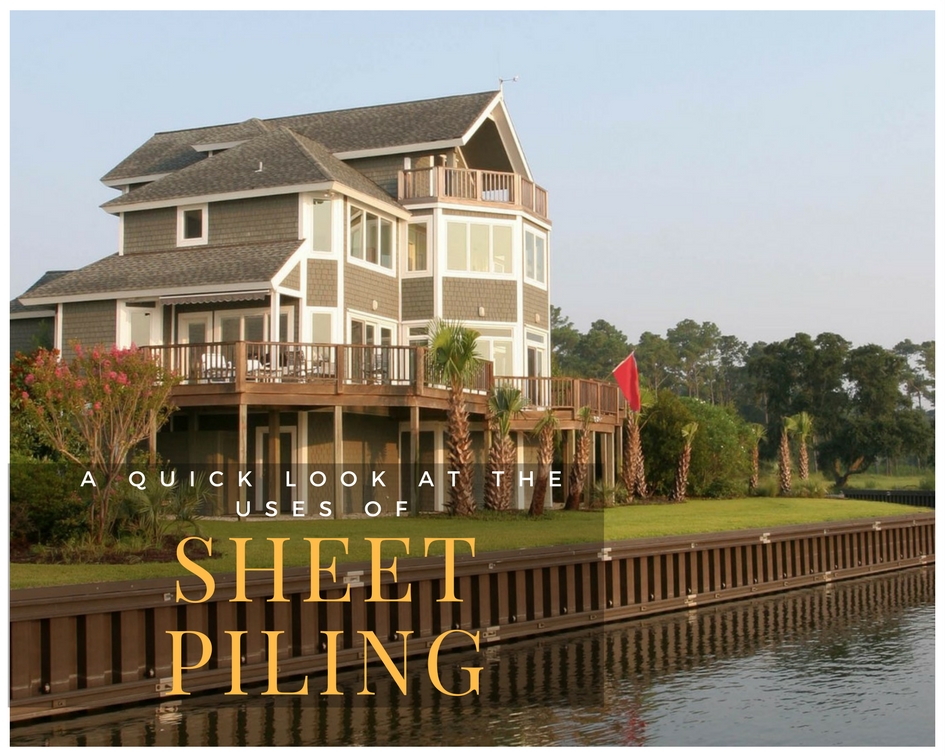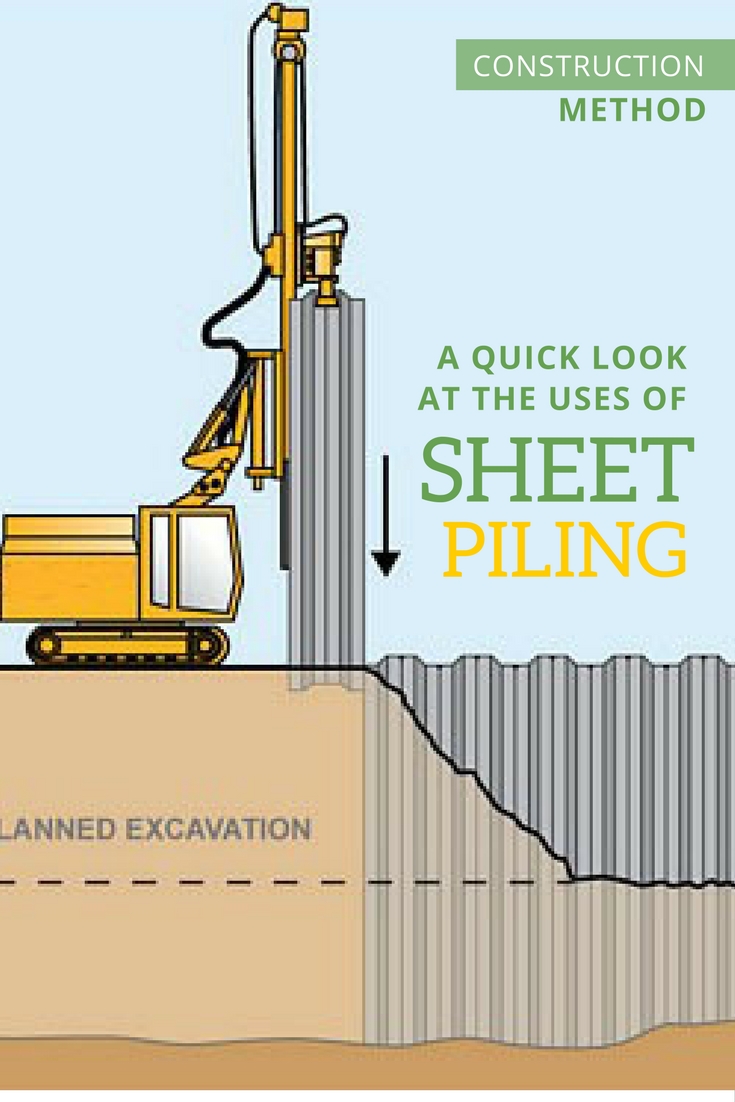A Quick Look at the Uses of Sheet Piling
A Quick Look at the Uses of Sheet Piling :
Sheet piling is a construction method where huge sheets of steel or plastic are used to retain soil.
These large sheet piles are driven into the ground and linked together to form a strong and long lasting barrier which serves a number of purposes, such as protecting building foundations.
For more on exactly what sheet piling is and the advantages of using it, check out this post from Civil Engineering Basic, but we’re going to take a quick look at some of the ways in which sheet piling is being used in construction.
Flood Protection :
Sheet piling is often used in flood protection and erosion walls, due to the extreme durability and water tightness that the piles offer.
Piles are used to create watertight embankments which ensure support and stabilisation, with the natural deposition of soil in the interlocks ensuring that they’re completely waterproof, although further sealants can be used.
Sheet piling is commonly seen in the use of flood defences such as cofferdams and in harbours along the coast of the UK, which can be subject to some pretty extreme conditions throughout the year.
Sheet piling is also quite a cost-effective and quick to install method, meaning that it can be set up quickly as a defence in itself, or used to provide stabilisation while other defences are erected.
Special vinyls are often used for underwater constructions, as steel can erode due to the salt water in the sea.
Underground Structures :
Another common use for sheet piling is in the construction of underground structures such as basements and underground car parks.
These structures require a strong foundation to ensure that the huge amount of soil from excavation don’t fall in on the build site.
Instead of providing temporary support to the works, however, sheet piling actually becomes a permanent fixture, due to its long life and durability.
Sheet piling is also useful in the construction of basements in that it provides good water tightness.
Check out some of these case studies from Sheet Piling UK to see how sheet piling is used in basements.
Railway Lines :
While roads can bend around obstacles such as hills, this isn’t the case for railway lines, which somehow have to go right through them.
In this case, sheet piling needs to be used to dig a trench or tunnel, supporting the earth on either side of the tracks and preventing any unexpected landslides.
The sheets used will usually be shorter than usual, and the driving method used will be vibration free, to avoid any damage being caused to the line, or any surrounding structures.
Seawalls :
Sheet piling can also be used in marine constructions such as seawalls, which protect coastal buildings and structures from the tide and waves.
These coastal structures can take a fair battering from the elements, especially during extreme weather conditions, so sheet piling helps to provide a long-term form of protection.
Unlike many wooden solutions, sheet piling won’t rust, and can, therefore, last for many years without having to be replaced.









